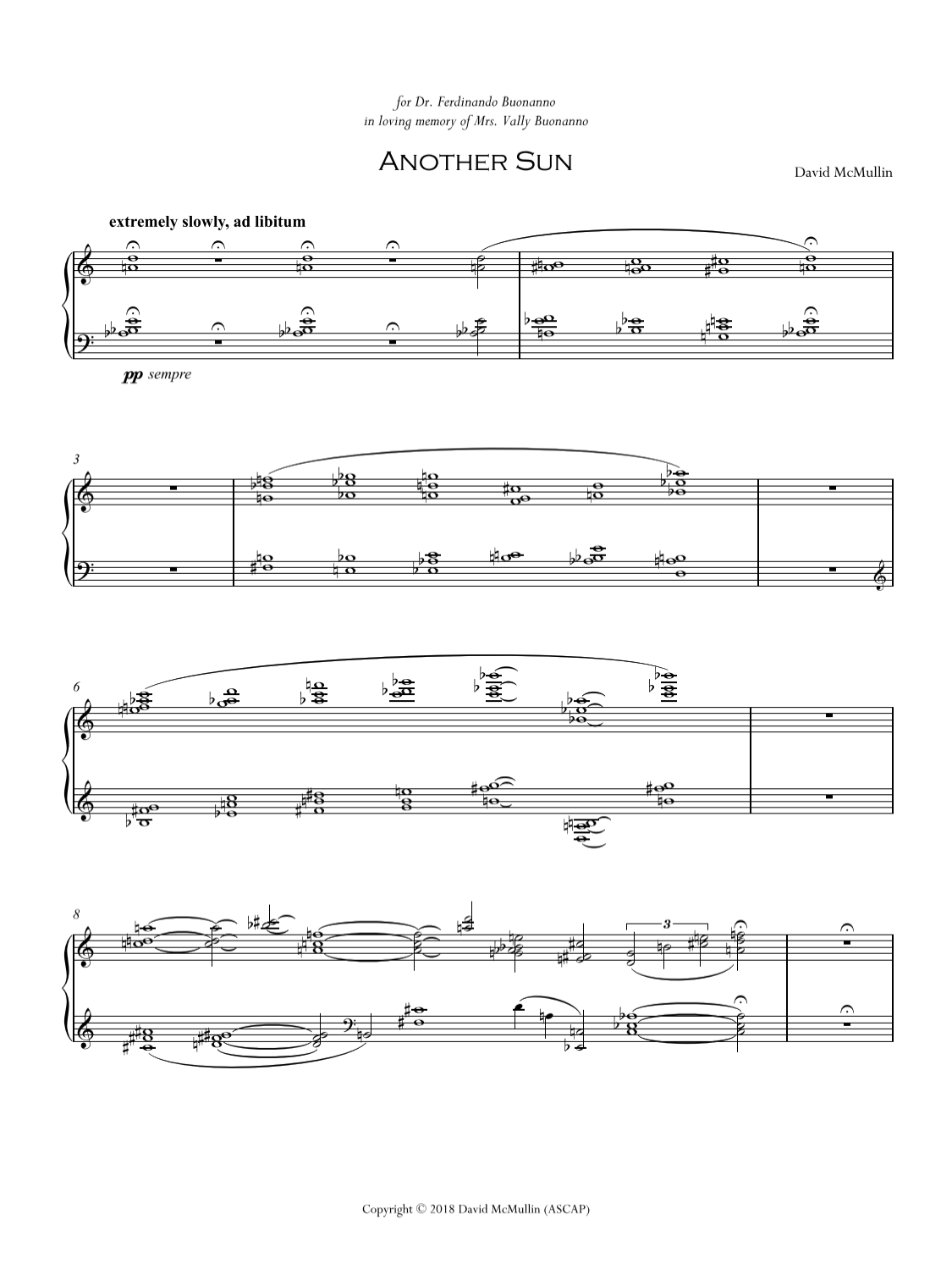For a pianist friend who knows everything about new music, loves Neapolitan songs and the Beatles, but can barely move his fingers now.
Jon Sakata, piano, October 16, 2018, Jordan Hall, Boston.
Another Sun is dedicated to Dr. Ferdinando Buonanno, a great friend and mentor who has long been an inspiration to me and my family. Loving music with a deep intellectual and spiritual commitment and fascination, he is an accomplished pianist. (But a shy one—I’ve never heard him play.) In recent years, however, a gradual loss of flexibility in his hands has kept him away from the piano. This composition was intended to be one he can play, that will still fit under his fingers. It is dedicated to Dr. Buonanno in memory of his beloved wife, Vally Buonanno, whom we miss every day.
The recording above is Jon Sakata‘s premiere performance on October 16, 2018 at Jordan Hall in Boston. I am sincerely grateful to Professors Robert Cogan and Pozzi Escot for presenting the premiere, and to Jon for his artistry and intuitive understanding in bringing this music to life.
Performance note: This piece should be played extremely slowly, in free rhythm, with a total duration of at least eight minutes—more if you can get away with it. How much time to give each sound and silence is up to the performer; the rhythmic notation should not be taken too literally. Each whole-note chord should ring for a long time, but not necessarily the same amount of time. Each should be allowed time to sink in and be considered individually, rather than merely as a waypoint in a surface progression; but they should not be completely static, isolated objects—as a general guideline, move as slowly as you can while still preserving a sense of large-scale phrasing. Half-notes are shorter than whole-notes, but not necessarily half as long. More specific rhythms in shorter note-values represent local rhythmic contours that should cohere a bit more clearly as they surface, but the appearance of such details should not change the essential free-floating, ametrical character of the music. Tenuto markings indicate chords where a relatively abrupt cut-off is an important articulation. At the performer’s discretion, chords without such markings may be allowed to fade out naturally, or be gently rounded off, or be blended into the onset of the next chord by means of pedaling. Dynamics throughout should all be generally quiet, but should be varied and shaped, overall and chord to chord, according to what feels right to you. Whether in terms of timing of entrances, length of silences, nuances of dynamics, modes of attack, or how harmonies succeed or emerge from one another, a degree of unpredictability from moment to moment is encouraged as a source of tension and interest, as long as the continuity of the long arc of the piece is sustained.
